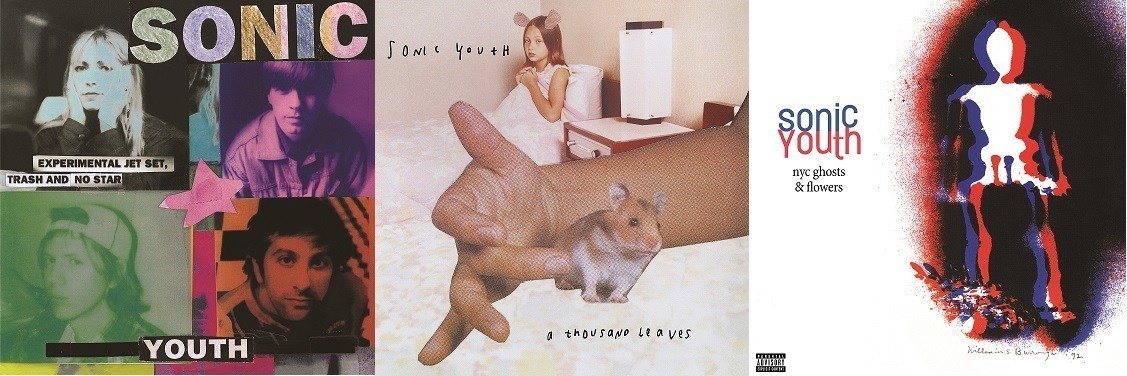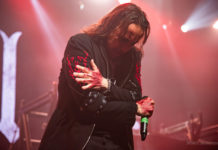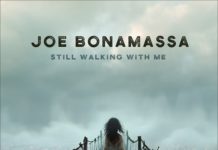Sonic Youth’s Experimental Jet Set, Trash and No Star (1994), A Thousand Leaves (1998) and NYC Ghosts & Flowers (2000) will be reissued on vinyl October 14, concluding UMe’s yearlong initiative to reissue the pioneering art-punk band’s entire nine-album DGC/Geffen catalog. This third and final batch follows the February release of Goo, Dirty and Washing Machine and the July release of Murray Street, Sonic Nurse and Rather Ripped. Like their predecessors, all albums have been remastered from the original stereo analog master tapes and will be available on both high-grade “back to black” vinyl complete with a digital download card for 320kbps MP4 AAC audio as well as in a variety of HD audio formats (including 192kHz 24-bit, 96kHz 24-bit and Mastered for iTunes). All titles will be made available through all participating online stores and retail outlets, as well as Sonic Youth’s official website.
Experimental Jet Set, Trash and No Star was the band’s eighth studio album and follow-up to Dirty. Buoyed by the anxiety-inducing pop-meets-noise classic, “Bull In The Heather,” the album peaked at No. 34 on the Billboard 200 chart, marking the band’s highest U.S. chart position up until then. Alternative Press noted the album’s anti-commercial aesthetic “doesn’t get much cooler than this,” while Rolling Stone called the record “quietly confident, more ambitious and weirder than Dirty.” The Los Angeles Times concluded Sonic Youth “transcends the confining roles of pretentious art-rock band or palatable alternative group, and instead offers a penetrating album that’s all its own.”
A Thousand Leaves was Sonic Youth’s 10th studio album and the group’s first major effort to be recorded at their own Echo Canyon studio in NYC. Free from the constraints of paying for costly studio time, the band was able to work at their desired pace and experiment at will. The result was an album born out of improvisation, chiefly characterized by the guitar interplay between guitarists Thurston Moore and Lee Ranaldo. The album title was inspired by Walt Whitman as Moore explained, “The same way he improvises with images and words, we improvise with sounds and notes.” Pitchfork praised the epic “Hits of Sunshine (for Allen Ginsberg)” as its centerpiece while the Village Voice’s Robert Christgau remained one of the band’s strongest supporters, calling the album “the music of daydream nation old enough to treasure whatever time it finds on its hands… They wander at will, dazzled by sunshine, greenery, hoarfrost and machines that go squish in the night,” placing it at #3 in his year-end Pazz & Jop “Dean’s List,” and later naming it one of the 10 best records of the 1990s.
NYC Ghosts & Flowers, the band’s 11th studio album, represented a slight stylistic departure, mainly as a creative reaction to the theft of their instruments while on tour the summer before. Instead of using the gear they were intimately familiar with, they unearthed instruments in their studio they hadn’t used in years, resulting in a flood of new inspiration. Salon insisted the album “has a gloomy, unaccommodating tenacity that’s hard to shake,” while Chicago Tribune critic Greg Kot raved, “These noise-rock renegades are once again happily viewing their guitars as hunks of wood, wire and infinite possibility… No rock band makes the avant-garde sound quite this tactile and sensual.”







